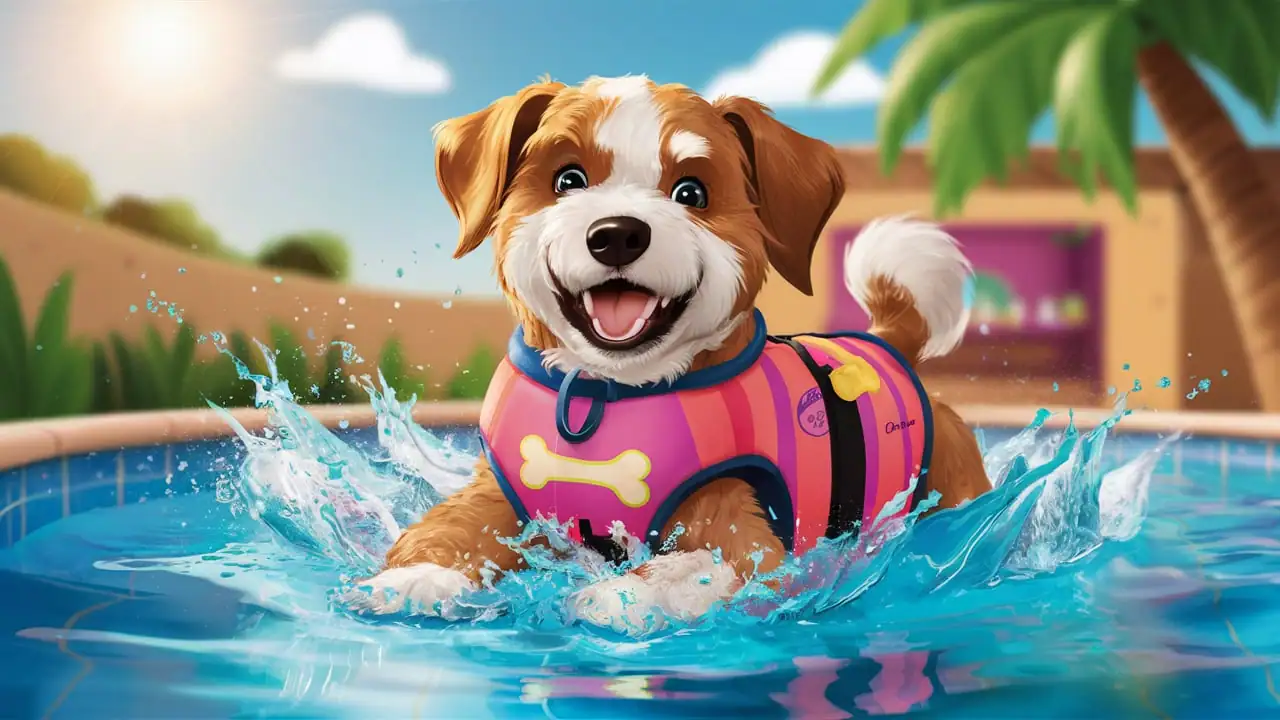Yes, poodles are excellent swimmers. Their aquatic prowess stems from their history as water retrievers and unique physical traits that make them naturally adept in water. This comprehensive guide will dive deep into the world of poodles and their remarkable swimming abilities.
History and Breeding
Poodles were originally bred in Germany as “Pudelhunds” or water dogs. Their name, derived from the German word “pudel,” means “to splash in the water.” This heritage highlights their long-standing relationship with aquatic activities.
Dr. Sarah Johnson, canine historian at the University of Canine Studies, explains: “Poodles have been bred for centuries to retrieve waterfowl. Their swimming ability was crucial for their original purpose, and this trait has been preserved in modern poodles.”
Physical Traits That Make Poodles Swimming Champions
Several physical characteristics contribute to poodles’ swimming excellence:
- Strong, muscular bodies: Provides power and endurance in water
- Webbed feet: Acts like natural flippers, enhancing propulsion
- Water-resistant coats: Helps maintain body temperature and buoyancy
- Athletic build: Allows for efficient movement through water
CHECKOUT:- Are Poodles Smart? Unraveling the Intelligence
Poodle Types and Their Swimming Abilities
All three poodle varieties can swim, but with slight differences:
- Standard Poodles: The largest and strongest swimmers. Their size and strength make them exceptional in water, capable of swimming long distances.
- Miniature Poodles: Capable swimmers with similar traits to Standard Poodles. They may tire more quickly but are still adept in water.
- Toy Poodles: Can swim but have less endurance due to their size. Extra caution and supervision are necessary.
Case Study: Max the Standard Poodle Max, a 5-year-old Standard Poodle from California, regularly swims 2 miles in the ocean with his owner. His incredible endurance showcases the swimming potential of well-trained poodles.
Training and Introduction to Water
While many poodles have a natural affinity for water, some may need training:
- Start with basic obedience commands
- Introduce water gradually, beginning with shallow areas
- Use positive reinforcement with treats and praise
- Never force a poodle into the water
Professional dog trainer Lisa Martinez advises: “Patience is key when introducing poodles to water. Make it a fun, positive experience, and they’ll likely become water enthusiasts.”
Benefits of Swimming for Poodles
- Excellent low-impact exercise for maintaining healthy weight and building muscle
- Mental stimulation and enrichment
- Cooling activity for hot days
- Joint-friendly exercise, especially beneficial for older poodles
Safety Considerations
- Always supervise your poodle while swimming
- Use a well-fitting canine life jacket in open water
- Dry ears thoroughly after swimming to prevent infections
- Rinse with fresh water after swimming, especially if in chlorinated or salt water
- Be aware of water conditions, including temperature and currents
Fun Water Activities for Poodles
- Fetch games with floating toys
- Dock diving competitions
- Kayaking or paddleboarding with your poodle
- Swimming races or relay games with other dogs
Competitive Swimming and Water Sports for Poodles
Poodles excel in various water-based competitions:
- Dock Diving: Poodles often perform well due to their agility and love of retrieving
- Canine Surfing: Some poodles have become proficient surfers
- Water Retrieval Trials: These events showcase poodles’ original breeding purpose
Did You Know? In 2019, a Standard Poodle named Sushi set a dock diving record for the breed with a jump of 27 feet 6 inches!
Common Myths About Poodles and Swimming
- Myth: Poodles can’t swim well because of their fancy haircuts. Reality: The traditional poodle clip was designed to enhance swimming by reducing drag while keeping vital organs warm.
- Myth: All poodles love water instantly. Reality: While many do, some poodles may be hesitant at first and require patient introduction.
- Myth: Poodles’ curly coats get waterlogged easily. Reality: Their water-resistant coats actually help repel water and maintain buoyancy.
Expert Tips for Swimming with Different Poodle Sizes
- Standard Poodles: Focus on endurance training and consider open-water swimming under supervision.
- Miniature Poodles: Use buoyancy aids initially and practice in calm waters.
- Toy Poodles: Always use a life jacket and stick to shallow, controlled environments.
FAQs
How often should I let my poodle swim?
The frequency depends on your poodle’s fitness level and enjoyment of swimming. For most healthy poodles, swimming 2-3 times a week is beneficial. Always monitor for signs of fatigue.
Can poodles swim in cold water?
While poodles can tolerate cooler water, it’s best to avoid extremely cold temperatures. Water below 50°F (10°C) can be dangerous. Always consider water temperature and limit swim time in cooler conditions.
Do I need to groom my poodle differently if they swim regularly?
Regular swimmers may need more frequent brushing to prevent matting. Pay extra attention to drying and cleaning their ears after each swim. Consider using a leave-in conditioner to protect their coat from chlorine or salt water damage.
Conclusion
Poodles are not just capable swimmers; they often excel in water activities. Their unique combination of physical traits, intelligence, and breeding history makes them natural aquatic athletes. Whether for exercise, competition, or just fun, swimming can be an excellent activity for poodles of all sizes.
Remember, while most poodles enjoy water, each dog is unique. Always consider your poodle’s individual comfort level and prioritize their safety when introducing them to swimming. With patience, proper training, and the right precautions, you and your poodle can enjoy many splashing good times together!

